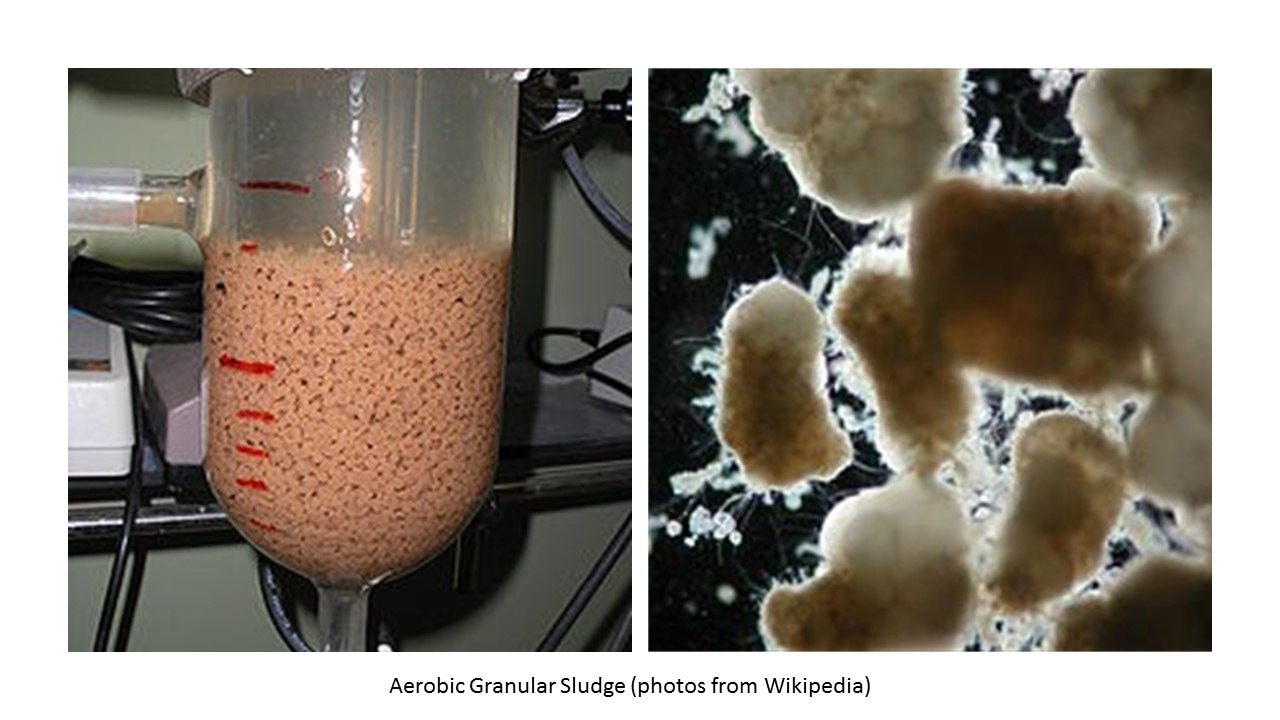Among the new trends in advanced wastewater treatment, Aerobic Granule Sequencing Batch Reactors claim to simultaneously oxidize organics, oxidize ammonia, reduce nitrate/nitrite, and remove soluble phosphate. All while not requiring secondary clarifiers to settling biological solids. What is this new technology? What are its advantages? What are the disadvantages?
First the technology
- Use a modified SBR technology with short settling times
- Aerobic granules are microbial structures which are larger and more dense than regular floc - are the desired biomass
- Aerobic granules are targeted at 15 - 20 g/L vs 3 - 5 g/L for activated sludge units
- The granules are built with short settling times and feast/famine feeding
- 20% less surface area required for treatment plant
- 30% lower power (energy) requirements
- Reduced operator activity as all treatment phases occur in one tank
- Less solids for dewatering/disposal
- Does not require expensive media to support bacteria or membranes for solids seperation
- Relatively new technology
- We don't know impact rapid changes in influent makeup or toxic shocks/spills
- First units have been in domestic/light industrial and food processing industries - we don't have real world data on industrial wastewater treatment systems.


 RSS Feed
RSS Feed